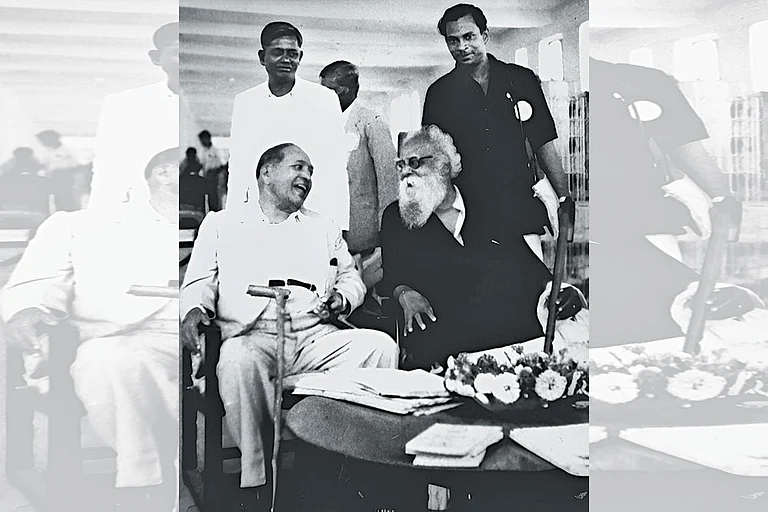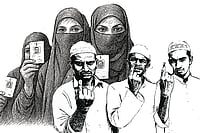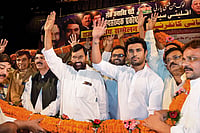Practicing democracy by nation-states in the real world is seen, of late, to be guided more by their own pathologies than by their perseverance. More citizens are getting disgusted by its observable pathos of public rhetoric and barbed emotions, and there seems to be a growing cynicism to the core features of democratic ethos itself. Democracy has unfolded with a lot of emotional and psychic baggage, and in the present conditions of denials, we, as a nation, need to be careful of what we aspire for.
One of democracy’s smothering emotions is its capacity and propensity to generate enormous amounts of hate, fear and rage in its polity and in society, especially on the basis of the majority-minority binary. To cobble up a working majority for government formation, political parties appeal to the core sensibilities of ethno-political emotions of the voters and produce new forms of hatred, and sometimes extreme forms of ethnocidal and communal violence. Counting of ‘us’ and ‘them’, this sort and that sort of people in a given territory, demography, enumeration and representation, all of these become the repeat motifs of community-building exercises. The strange inner tensions of the categories of ‘majority’ and ‘minority’ yield to the ‘angst of deficiency or lack’ and drive the majorities into conditions favourable to paroxysms of violence against the minorities. In India, it is this sense of incompleteness that finds its cause in Islamophobia—the fear of Islam and the core of Hindutva politics of hate and intimidation of Indian Muslims.
Institutionalisation of Islamophobia
Islamophobia, in theory and practice and at the global level, gained currency by the events of 9/11 and the war on terror launched in Afghanistan, which further extended to Iraq shortly thereafter. The Hindu Right in India, led by the Bharatiya Janata Party (BJP), tapped on to this geography of anger against the manufactured global behemoth called ‘Islamic terrorism’, and drubbed its political agenda of Islamophobia in its political campaigns.
In the Hindutva political mobilisations, Indian Muslims are conflated with those of Pakistan, quite often visible during cricket matches between them. Pakistan is dubbed as a proxy nation for Indian Muslims and, particularly during elections, the ratcheting up of war hysteria against Pakistan gives much leeway to the State to pump in more money in defence and armed forces to wage a decisive war against Pakistan. Campaigns by the BJP, constantly, seek the erasure of special treatment to minorities, especially Muslims, which is euphemistically named ‘Muslim appeasement’, and keep pronouncing cultural homogenisation as its leitmotif. There is a calibrated effort to mythify history textbooks, particularly children’s textbooks, to reflect Indian civilisation as Hindu civilisation and the Muslim and Christian interventions during the medieval and modern periods are taken as aberrations in the overarching Hindu nation-state. These campaigns are led by the cry of ‘Hindus in danger’, and under the presumption that the evil endangering the Hindus are the Muslims, who are not loyal to their nation and therefore cannot build up trust with the Hindus.
More than Islamophobia, in fact, it is Muslim phobia that is projected as the strategic political emotion to gain political dividends through strategic polarisation during election periods. In the book Politics of Hate, A Faizur Rahman makes a distinction between Islamophobia and Muslimphobia, and says that Islamophobia—the fear of Islam, the religion per se—is not what is feared by the Hindus, rather it is Muslim phobia, the political significance of the Muslim demographic threat and the fear and insecurity emanating from it, that is the real reason for whipping up of Hindutva politics. Though it is difficult to separate Islam from Muslims, Islamophobia, for the Hindu right, is a product of an idea that perceives Muslim backlash as real, and hence a constant push to put Muslims in a subservient second-class position.

The Geography of Phobia
Islamophobia in India, far from engendering fear among Hindus, even though the constant reminder of the slogan ‘Hindus in danger’, is the source of converse fear among Muslims. For Muslims living amidst the Hindutva politics of Islamophobia, the fear is palpable and they tread with triple anxiety: the fear of exclusion, the fear of inclusion and the fear of being seen as fearful. The exclusion fear is writ large when the symbols, artefacts and relics of Muslim culture and religion are not counted or dismissed in public spaces or in state functions. We see how Muslim heritage buildings are being abandoned, alienated, like an unwanted piece of architecture, despite being significant markers in the nation’s history of change and continuity. The sense of missing and losing out, being excised from the nation-building processes and the worry about deeper marginalisation make Muslims yearn for inclusion.
Muslim inclusion, what is generally referred to as mainstreaming, is embedded in the fear that this act would be done on some severe draconian terms. Mainstreaming seeks conformity from the marginals, and Muslims seeking to respond to conformity fear losing their fundamental right to preserve their culture, particularly when the demand for a Uniform Civil Code comes from the Hindu right raising the slogan ‘one nation, one culture’. The third anxiety that nags Muslims is the fear of being perceived as weak and fearful. They suffer from some sort of personality disorder that any vulnerable person is imbued with, and therefore, try to put up a brave and fearless face with a fearful heart. The dichotomy between thought and action, apprehensions and praxis, and hate and trust makes them, perhaps, more vulnerable.
Islamophobia, as historian Rajmohan Gandhi says, is the “Hindu consolidation against Muslims, the political equivalent in India for the American call, open or subtle, for white supremacy”. It is the distrust of Muslims that enables the Hindu right to build up stereotypes and propaganda against Muslims on issues such as love jihad, the demographic threat, citizenship, violence and terrorism. The ethno-national State tries to camouflage itself in an Islamophobic dome to manage identity conflicts top-down through violent means.
Limits of Islamophobia
India is evolving into a pluri-cultural nation, despite Islamophobia. Different people are finding meaning in different ways of life. There exist different approaches to knowledge. There is a build-up of many power centres in society and citizens are largely committed to moderate, non-rancorous competition. The Indian constitution supports, in many ways, the core of liberal principles such as individual rights to freedom of speech, association and private property, the balanced institutional arrangements with inclusive and competitive power structures, and the decentralised systems of governance. The presence of a vibrant constitutionalism, inescapably, does not allow Islamophobia to take deep roots, and arrests the ‘pathological homogenisation’ by state-building elites.
There are two ways the Indian State’s attempts to homogenise her population on the axis of a single national identity—the core of the Hindutva project—get thwarted. One is the way in which the communities respond to each other, particularly in times of crisis. During the Covid-19 pandemic, we witnessed people transcend their primordial identities such as caste and religion, and in both, spiritual and secular ways, they attended to the needs of each other. The emotions to provide succour to the destitute emanate from the religio-cultural ganga-jamuni tahzeeb. After all, how do we account for so many non-Muslims visiting dargahs—Muslim shrines? The emotional bond between different communities runs deep, and the phase of Islamophobia may be seen as an aberration to the large swathe of history of accommodation and holding together.
And the second way that limits Islamophobia is the nature of politics of the region and the poor that gets refurbished in competitive electoral politics. Given the diversity in terms of goals, aspirations and attention that regions in India display, it is well-nigh impossible to homogenise identities with the fulcrum of Islamophobia. Caste, class and religious identities, the reified identities, trip the meta-identity of ‘one-nation and one-identity’. Federalism, which operates at the multilevel, is the governing framework of politics in India, and hence it is difficult to imagine one party ruling in all the states. Different voices emerge from different corners of the nation, and these voices demand, as in the past, sharing of sovereignty and exercising of autonomy. Islamophobia, and for that matter Hindutva, has its own limits in a democracy.
(Views expressed are personal)
Tanvir Aeijaz teaches public policy and politics at Ramjas College, University of Delhi and is Hony. Director at the centre for multilevel federalism, New Delhi



























